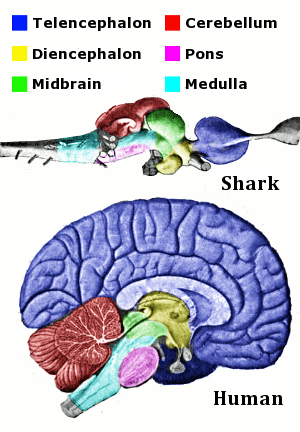BY DENNIS OVERBYE
The apocalypse is still on, apparently-at least in a galaxy about 3.5 billion light-years from here.
Last winter, astronomers at the California Institute of Technology reported that two supermassive black holes appeared to be spiraling toward a cataclysmic collision that could bring an end to that galaxy.
The evidence was a rhythmic flickering from the galaxy’s nucleus, a quasar known as PG1302-102, which Matthew Graham and his colleagues interpreted as the fatal mating dance of a pair of black holes with a total mass of more than a billion suns. Their merger, the astronomers calculated, could release as much energy as 100 million supernova explosions, mostly in the form of violent ripples in space-time known as gravitational waves that would blow the stars out of that hapless galaxy like leaves off a roof.
| The supermassive black holes are all that remains of galaxies once all protons decay, but even these giants are not immortal. (Photo credit: Wikipedia) |
As the black holes and their attendant disks swing around each other at high speeds, the light from the disk that is coming toward us receives a boost from relativistic effects-a so-called Doppler boost-the way a siren grows louder and more high-pitched as it approaches, giving rise to a periodic increase in brightness every five years.
The Columbia astronomers ‘model predicts that the variation would be two or three times greater in ultraviolet light than in visible light. And that is exactly what they found when they compared archival data from the Hubble Space Telescope and NASA’s Galex space telescope to the visible-light data previously analyzed by Dr. Graham’s group.
“What’s big is that the Doppler boost is inevitable,” Dr. Haiman said in an email. Given reasonable assumptions about the masses of the black holes, their model predicts the right ultraviolet data.
“This is rare in ‘messy’ astronomy,” he said, “to have an indisputable clean effect, which explains the data.”
Follow-up observations of ultraviolet and visible light emissions in the coming years could help clinch the case, the authors said. Their paper was published last month in the journal Nature.
Their model suggests that the black holes are orbiting each other at a distance of some 320 billion kilometers, less than tenth of a lightyear, a cosmic whisker. At that distance, the black holes would be rapidly losing energy by radiating gravitational waves and could spiral together into the final bang in as little as 100,000 years, Dr. Haiman said, depending on their relative masses.
| An artist's conception of a supermassive black hole and accretion disk. (Photo credit: Wikipedia) |
(Because the galaxy is so far away, the cataclysm might well have already happened more than three billion years ago, but the news still won’t reach us for another 100,000 years or so. So it is still in the future, as far as earthlings-whoever they will be by then-are concerned.)
E.Sterl Phinney, a Caltech astronomer and expert on supermassive black holes, agreed that Dr.Haiman’s model explained the quasar variations. “So Occam’s razor makes it attractive,” he said, referring to the long-held principle that physicists should adopt the simplest theory that fits the facts. But it was surprising, he said, to find two supermassive black holes that have gotten so close.
Black holes, predicted by Albert Einstein’s general theory of relativity, are objects so dense that not even light can escape from them. Every galaxy of note seems to have a supermassive black hole, weighing millions or billions of times as much as the sun, burping sparks of half-eaten stars and gas.
“A scientific theory is only as good as the tests which it has passed,” Mr. D’ Orazio said.
Einstein’s theory has passed all of the observational and experimental tests thrown at it so far. But some of its predictions can be tested only in the most extreme gravitational environments, namely black holes.
Taken from TODAY Saturday Edition, The New York Times International Weekly, October 3, 2015













































